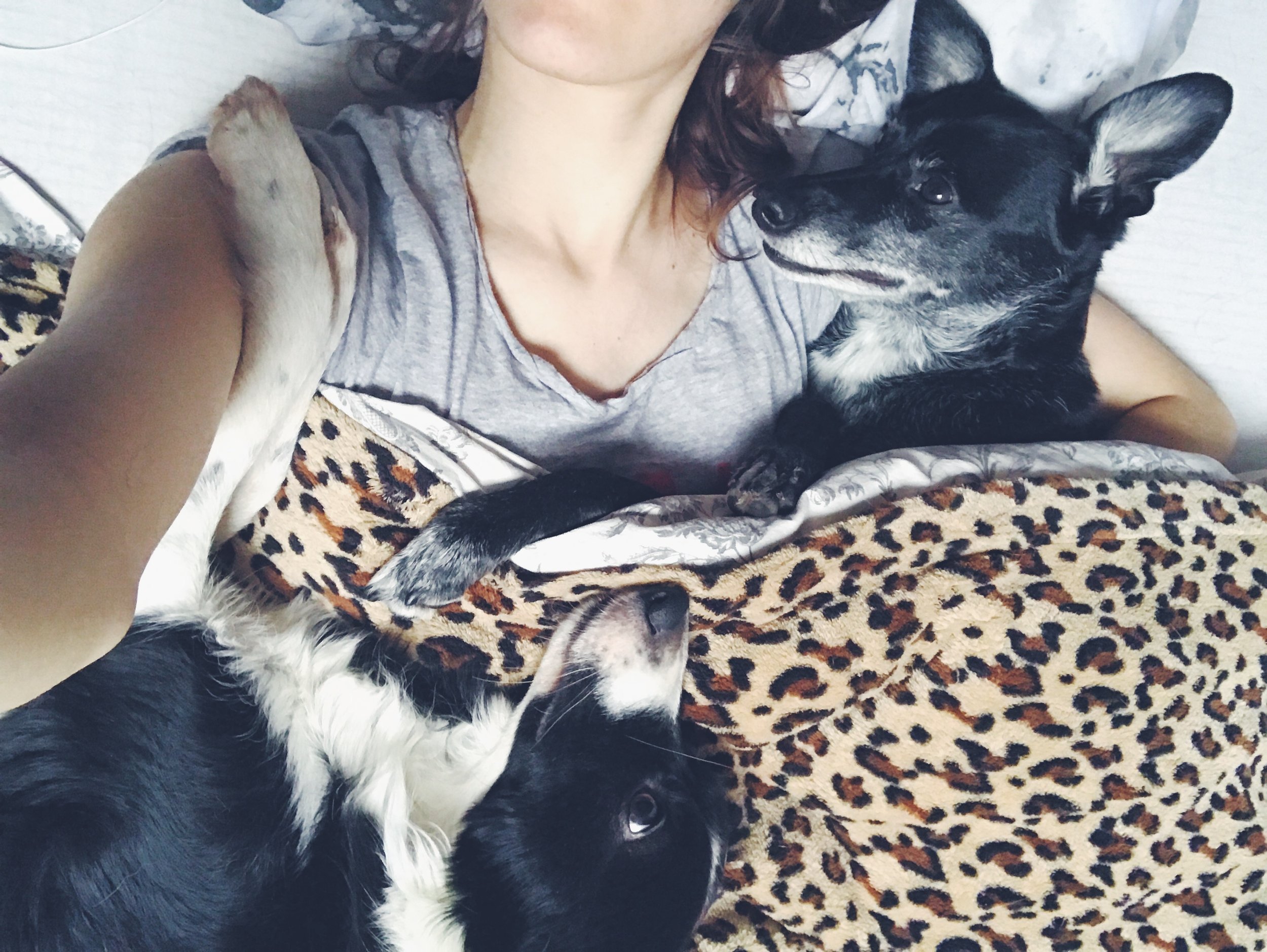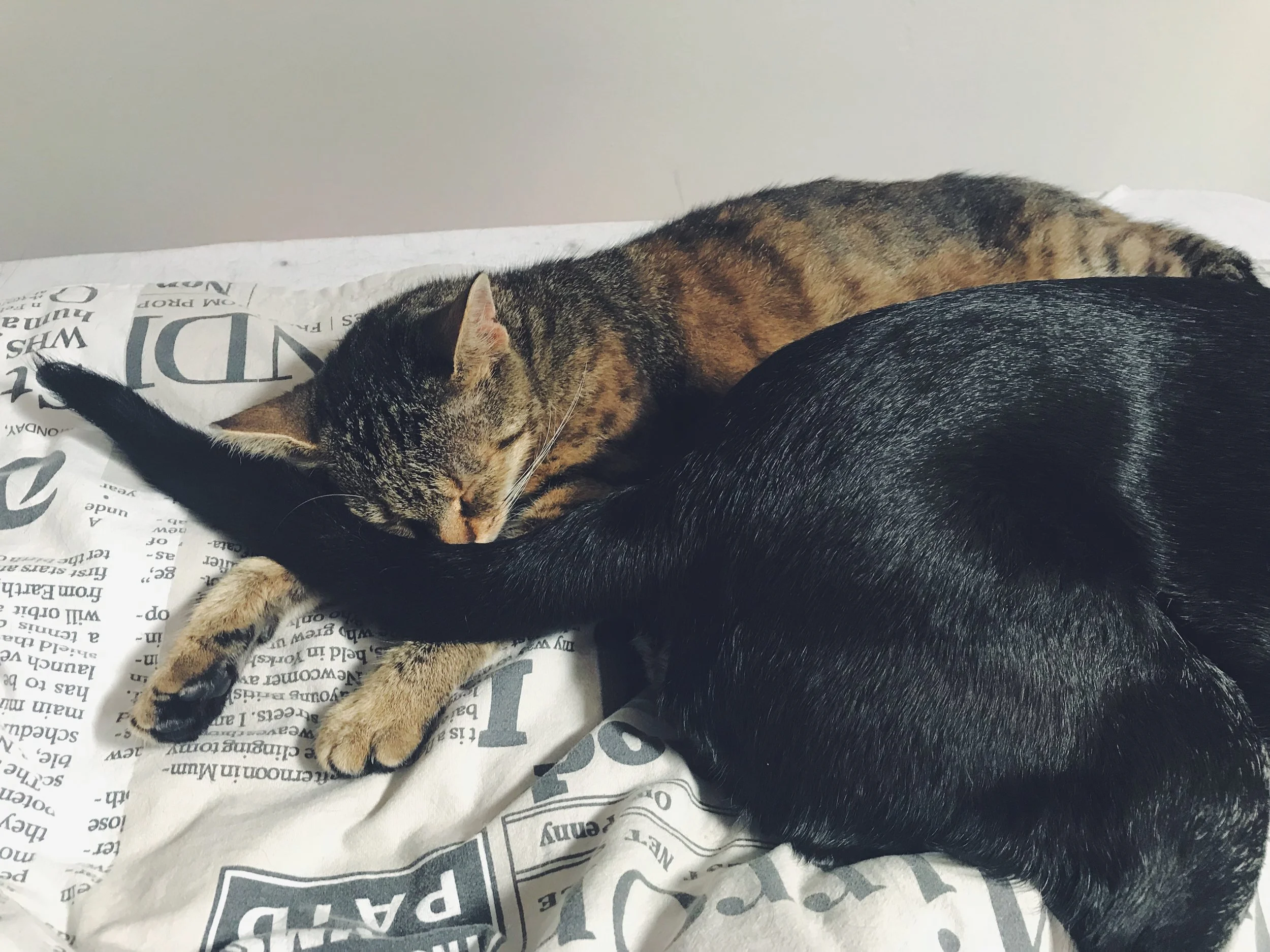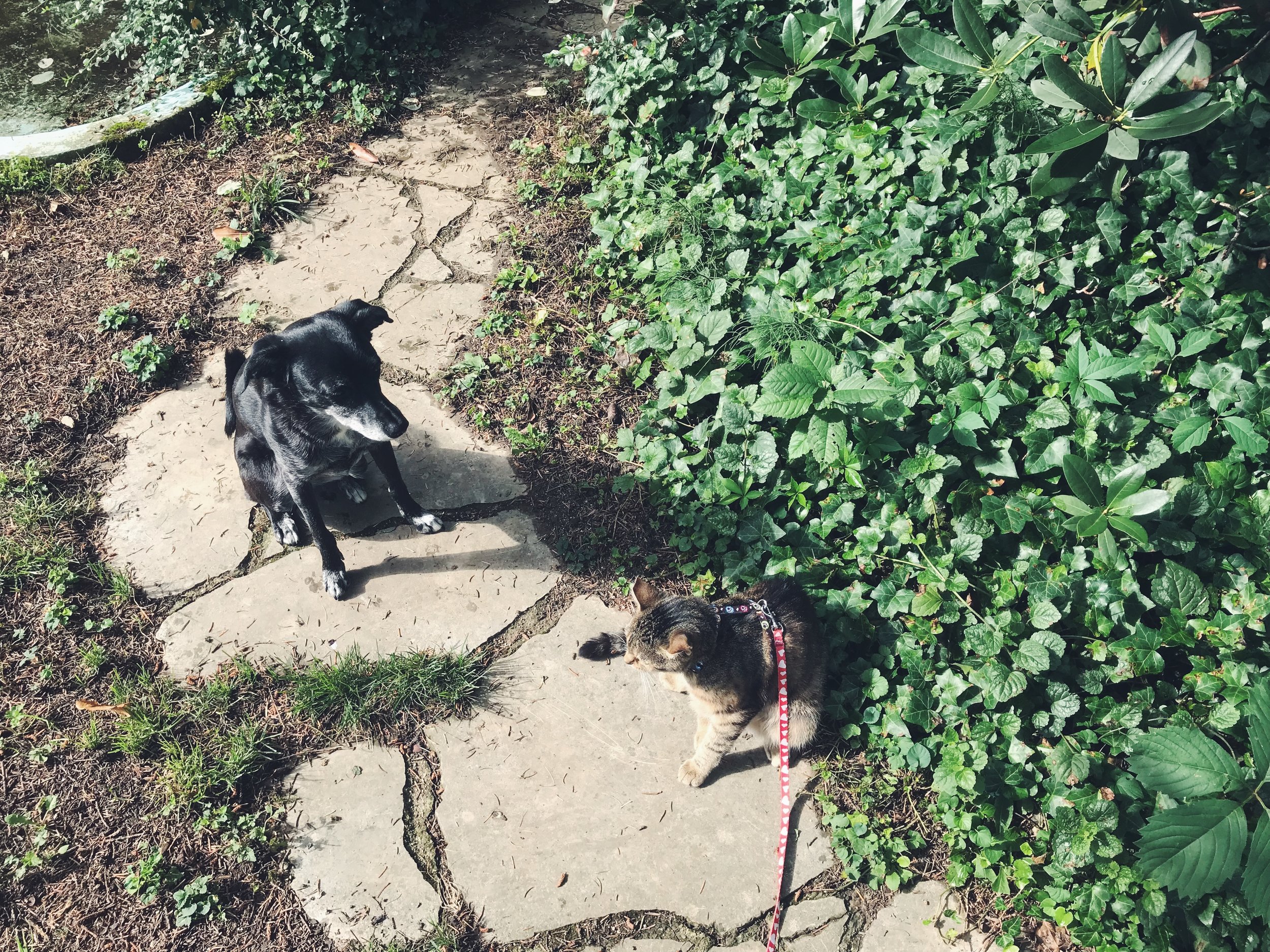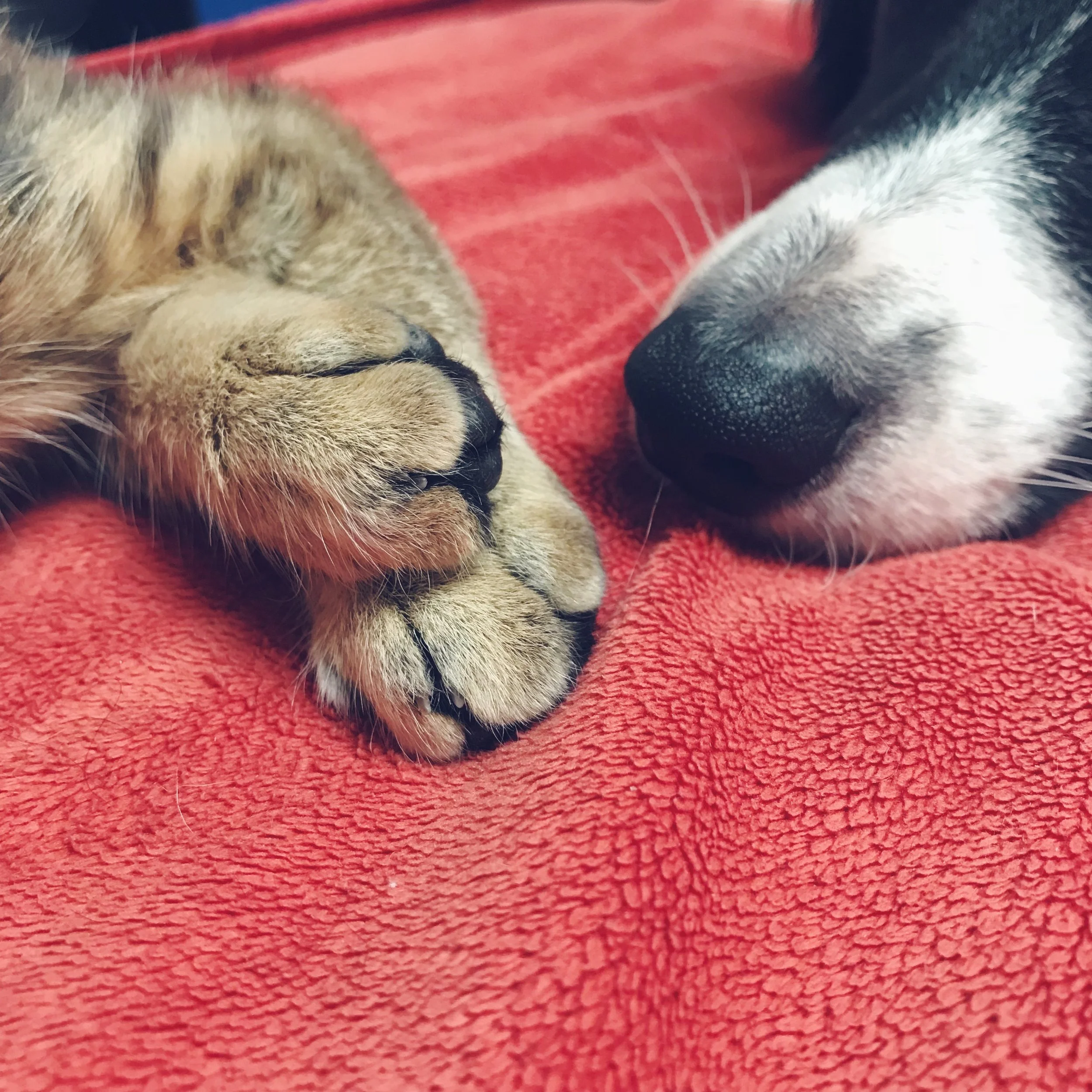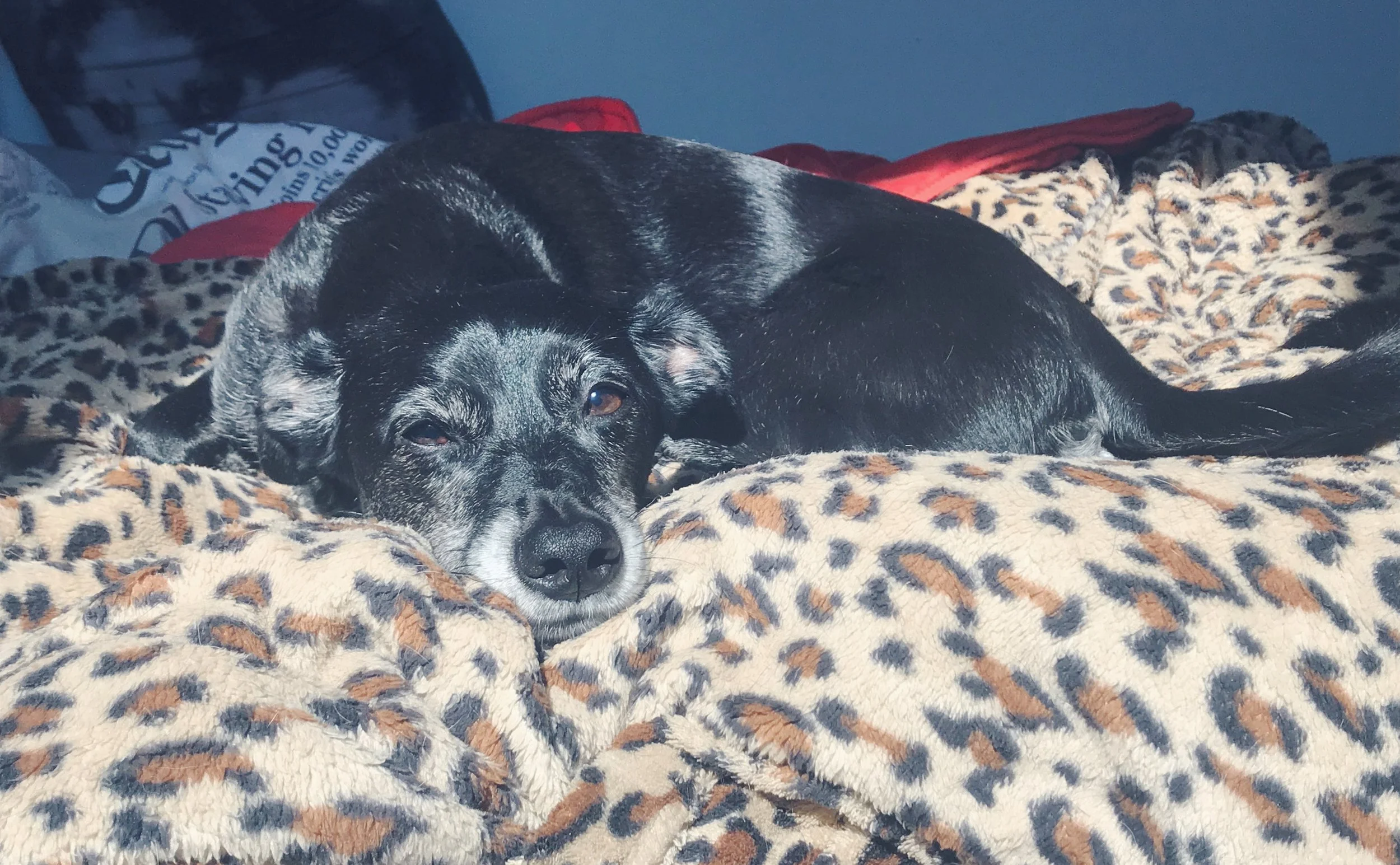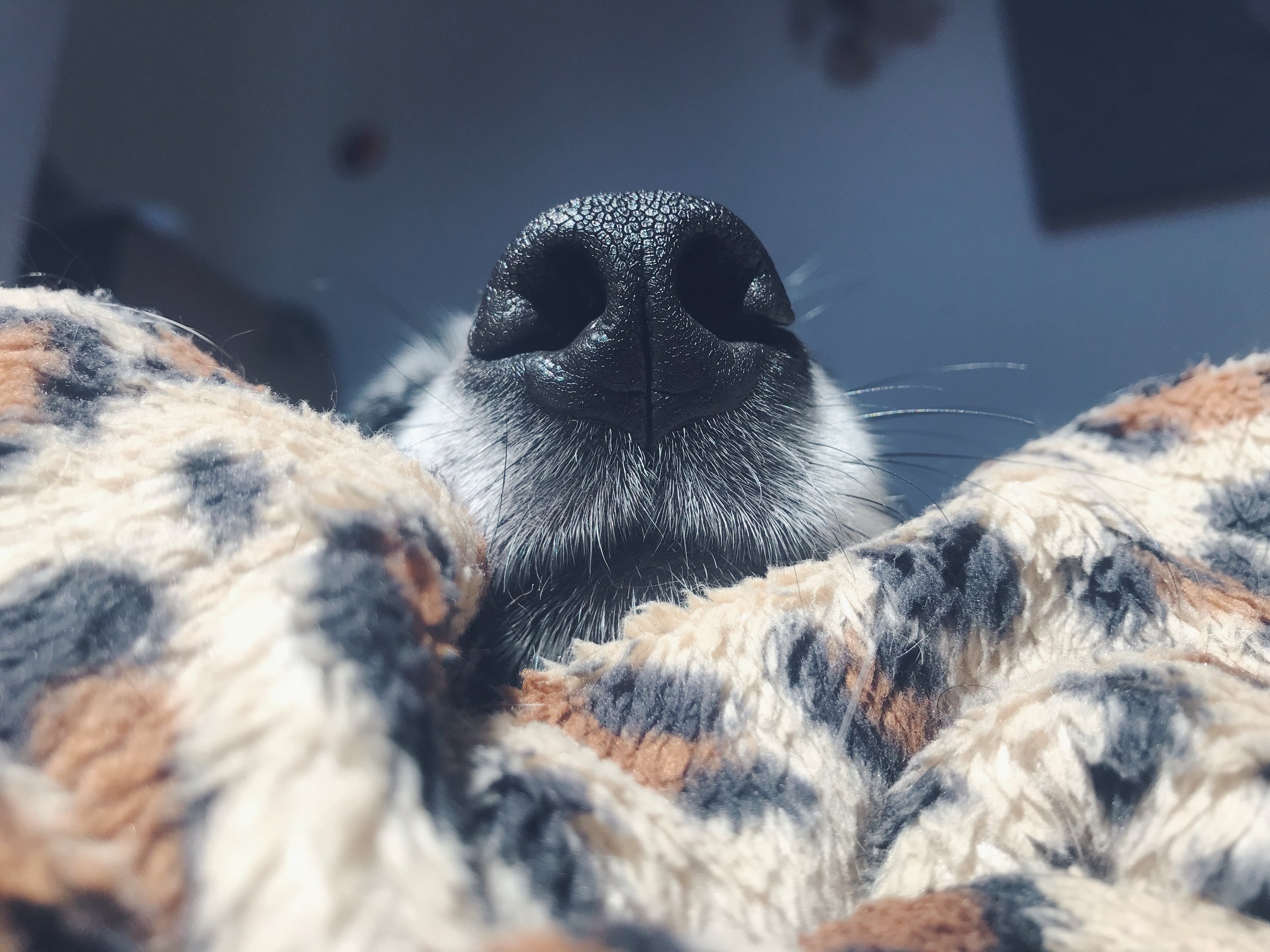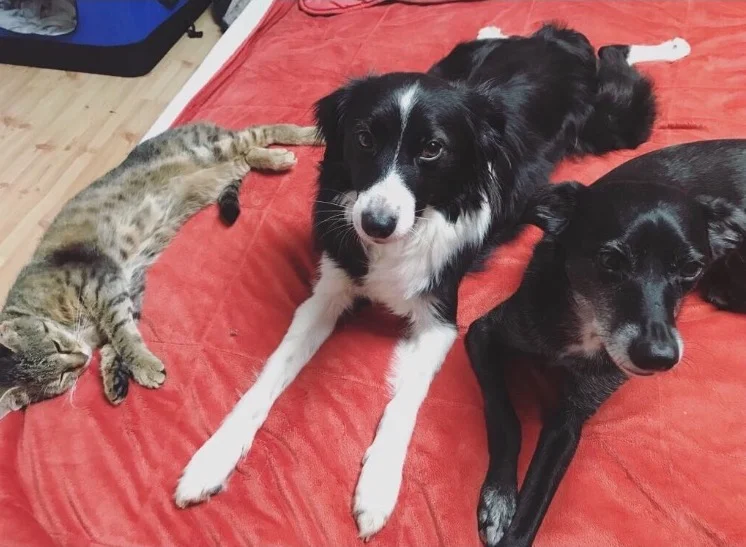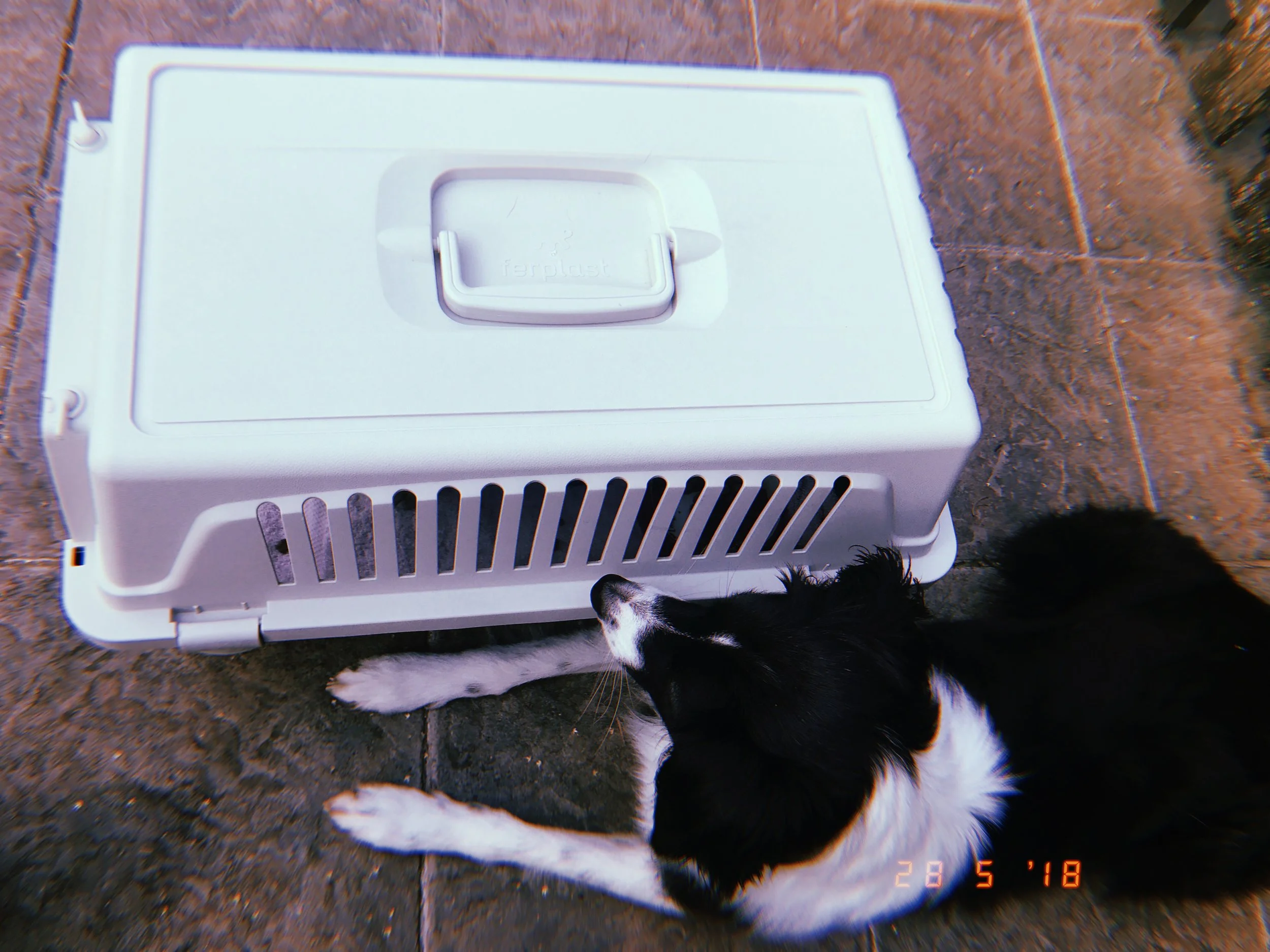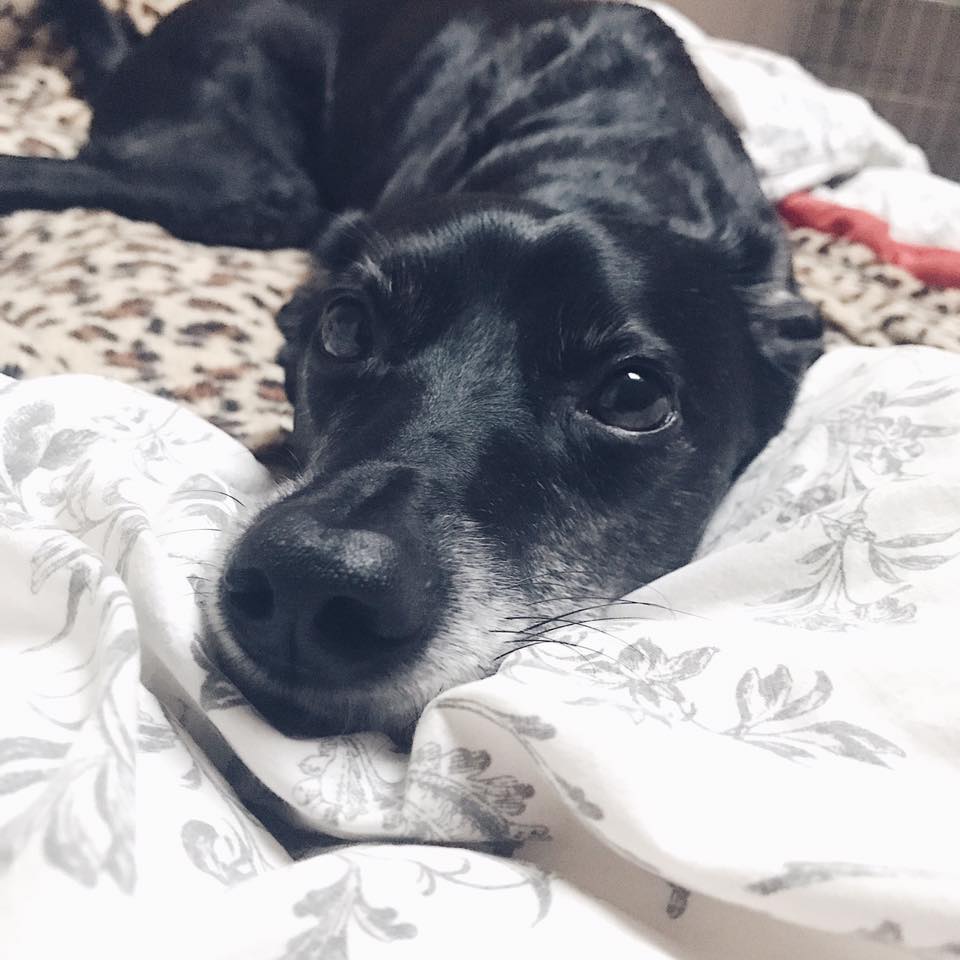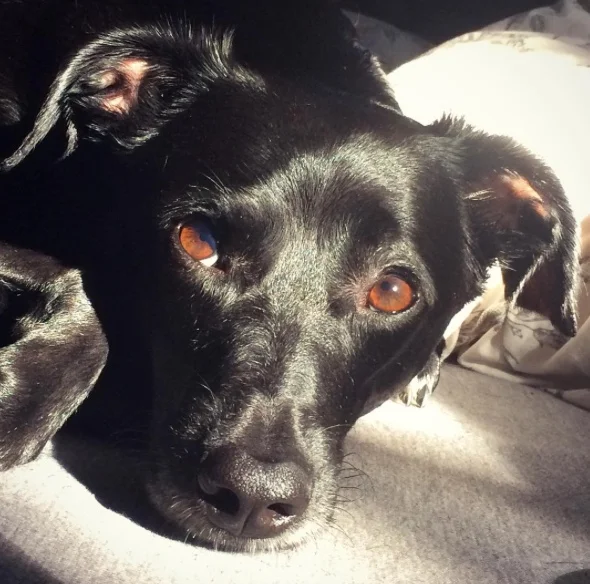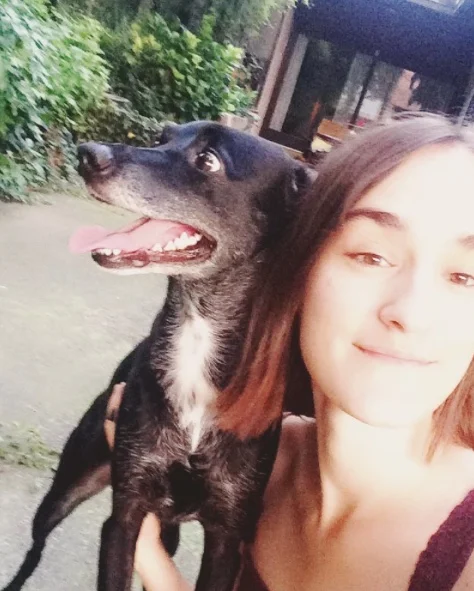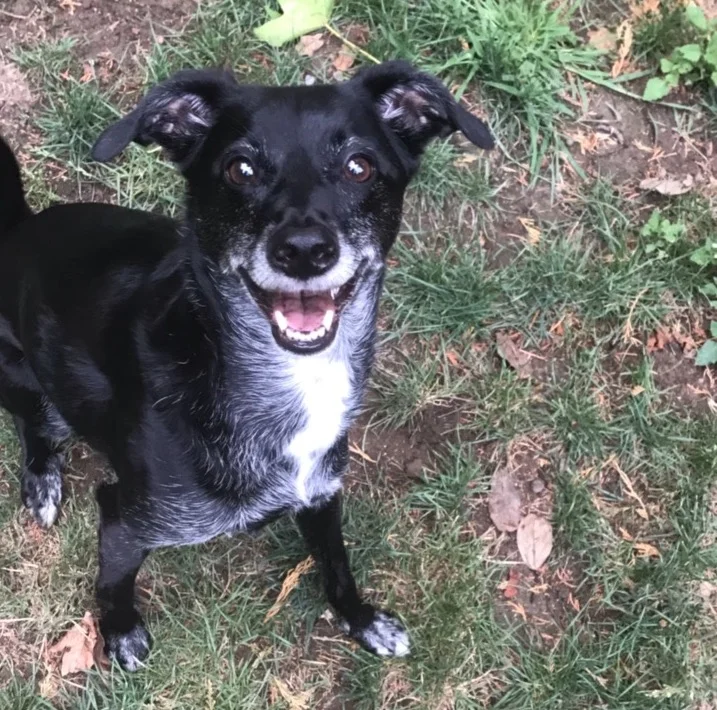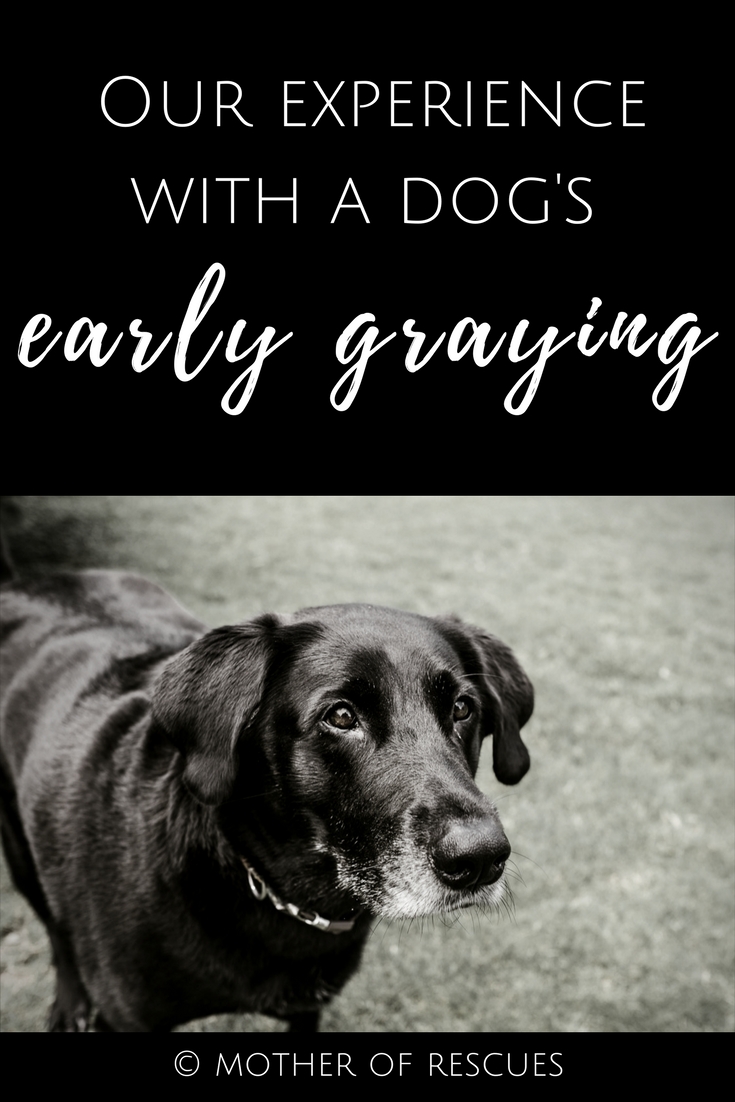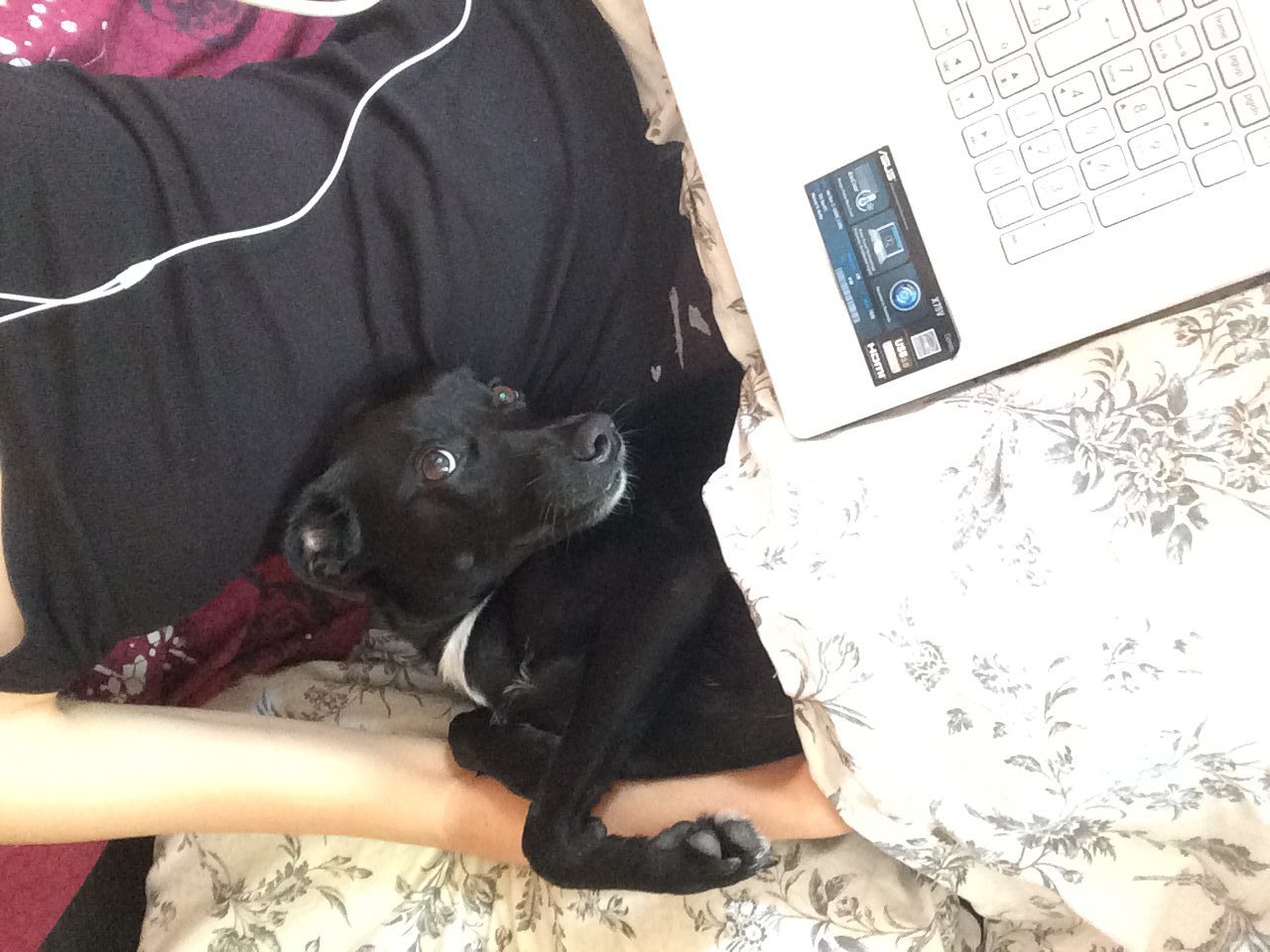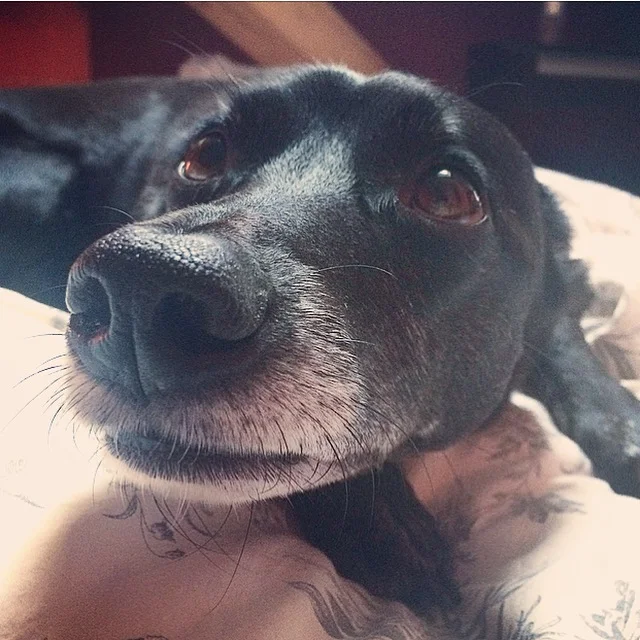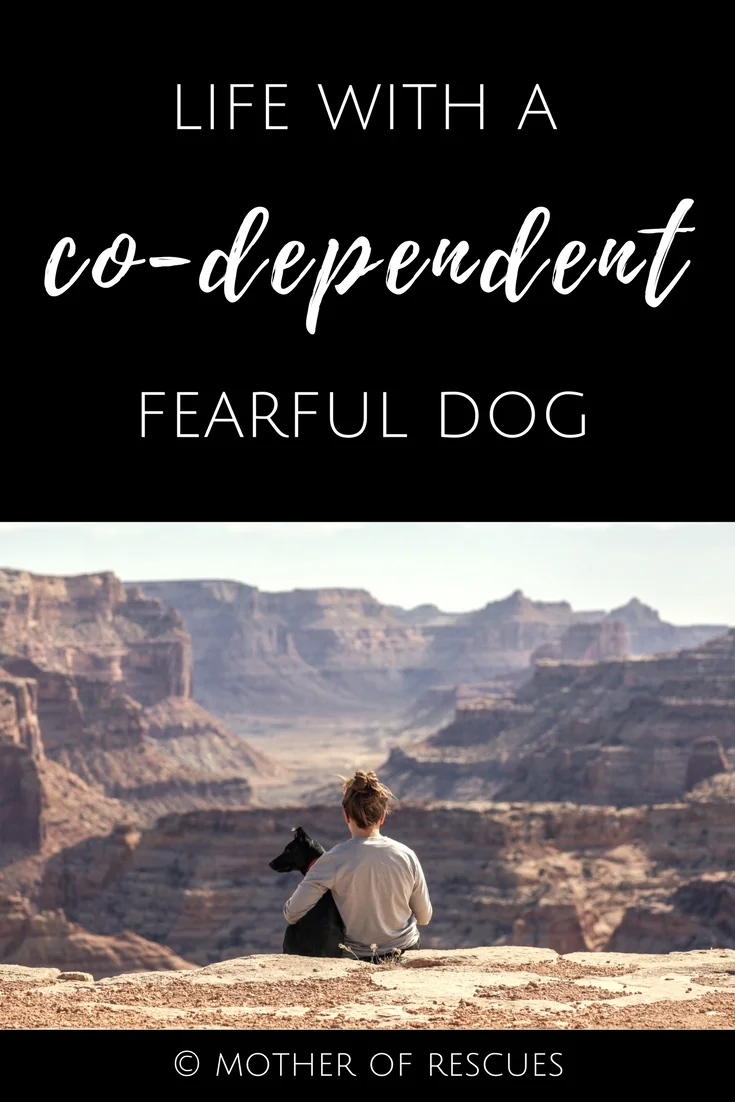The Importance of Rest for Reactive Dogs
/One thing that all dog owners have in common is wondering just how much exercise do our dogs need. What is the right amount? I get asked this a lot, especially in relation to reactive dogs. A mix of their genetics and reactivity often turns them into little balls of energy that don’t seem to have an off button. They can explode in a burst of energy when they see or hear a trigger, and even in the absence of triggers they can appear agitated. Over the years, I heard some dog trainers advise that reactive dogs need more exercise than normal dogs because “if they are tired and exhausted, they won’t have the energy to bark at their triggers.”
However well-meaning this advice may be, it can only come from someone who has never lived with a reactive dog full-time and doesn’t have a deep understanding of how fear works. No matter how tired your dog gets, they will still be afraid of the same things. Tiredness does not eradicate fear. Not in humans, not in dogs. This doesn’t mean that exercise doesn't play a role at all, though — of course it does! A dog that is well-exercised and has their primal instincts satisfied is in a much better mindset. They are happier, calmer, and more susceptible to learning new things. A dog who is exploding from extra energy is going to have a harder time being introduced to new situations than a dog who has just been fulfilled through his favorite game. But don’t mistake calm fulfillment with making your dog run 20km and then expecting him not to bark at other dogs anymore — if they are barking out of fear that won’t happen! What will happen is you will end up with a dog who is now physically and mentally exhausted! Unfortunately, we cannot exercise reactivity out of our dogs.
There is something we don’t talk about enough when it comes to reactive dogs and exercise, something that is so important but often gets overlooked: REST. Your reactive dog might need more rest than a normal dog their age!!!! Overstimulating a reactive dog not only hinders their rehabilitation, but it can actually make their condition even worse.
Fear is exhausting. Constantly being in the fight fear response (barking, lunging, snapping) is exhausting! Even if it’s just a short outburst, your dog puts all of their energy into it. Think about any past moment when you felt scared to death — think about what it did to your body. You felt the heat rush up, your limbs were tingling, there was shortness of breath, your heartbeat was racing. Experiencing fear and panic is stressful for the body. In the first two or three years, any time Bailey barked hysterically at a trigger (and she barked several times a day, every damn day), she could not calm down afterwards for a very long time. She was agitated, nervous, and hyped even a whole hour later.
The best way for your dog to decompress after a reactive response is through rest.
THE PILLARS OF REST
1 — QUALITY SLEEP TIME: Dogs need way more sleep time than most owners realize. On average, a healthy adult dog should sleep about half of their day. One of the worst things you can do for your dog’s mental health is keep waking them up after they’ve just fallen asleep. Nobody likes that! Plan your outings in a way that gives them larger blocks of time for sleep. Dogs (especially rescues and fearful dogs) LOVE routines; they provide predictability, which makes our dogs feel safe. Try to build a consistent routine around your dog’s rest time!
2 — PEACE AND QUIET: Most of us need peace and quiet for quality sleep. Think about what it’s like to fall asleep in a very loud house or while the upstairs neighbors are moving the furniture again at 3am. While some dogs can indeed fall into deep sleep in loud environments, reactive dogs seldom fall into this category. Fearful dogs need a quiet place to sleep in. This place should be somewhere they feel safe and are not constantly bothered by other pets, children, or adults. My reactive Bailey loves to sleep in my bed under the covers, or in her Cozy Cave Snoozer bed (hashtag not sponsored). She adores my other dog Chilly, and tolerates my cat Shadow, but I still make sure she has some alone time almost every day. She LOVES to sleep — much more than the other two! This makes sense, because the world feels more overwhelming to her. It’s my job to make sure she gets a few hours of uninterrupted rest every single day. In some way, reactive dogs remind me of toddlers; if they don’t have their scheduled nap time, they turn into little devils. 😉
3 — ZERO TRIGGER TIMEZONE: Your reactive dog needs not just space without their triggers, but also time without their triggers. Reactive dogs usually have more than one trigger, which means they get overwhelmed very quickly. If this happens to them on a daily basis, their reactivity can become a lot worse. Don’t overexpose them to everything at once in an attempt to “make them get used to it.” What will end up happening is your dog’s nervous system will only get more dysregulated, making them even more prone to reacting, perhaps even to things they didn’t react to before. Avoiding highly-triggering situations is a big component of rest! If you’re worried about this negatively impacting your dog, or you simply don’t know how to start, you can sign up for my FREE 5-day email training where I describe this process in more detail.
4 — FOLLOW YOUR DOG’S CUES: Most dogs will show you that they are tired, but you might miss their cues if you are not paying attention. Observe how your dog is acting when they are visibly tired. Then go a step back and think about how they were acting right before you noticed their tiredness. Some signs of tiredness can be panting, lying down a lot, pulling you back towards home, slower walking, sudden irritability, not wanting to cuddle, shorter attention-span, and more. Every dog is different, so if you have more than one dog you’ll have to recognize these cues for each of your dogs individually. My Bailey will literally come stare at me from close proximity until I take her into the bedroom to sleep.😂 Chilly shows a disinterest in toys or lies down in the most random places. Read your dog’s cues and follow your dog’s lead — don’t push them into overexercising if they’re subtly showing you they need a break!
5 — ENCOURAGE REST: Some dogs have a hard time expressing that they are tired and need to rest. This often happens in working breeds or dogs with very strong working instincts (such as prey instinct, pulling instinct, herding instinct, etc.). My Bailey is the biggest sleepyhead in the world — but Chilly? Absolutely not. Chilly is a border-aussie mix, so he is genetically wired to be “on” most of the day. In dogs that don’t seem to have “an off switch,” tiredness often shows up as hyperactivity. You’ve taken your dog outside, he’s gone to the bathroom, he’s been active, he’s had his meals and his cuddles … but he’s still bouncing from wall to wall. I speak to many dog owners who believe their dog is never tired or that no amount of exercise is enough. My advice is always the same: your dog needs to learn how to rest. While Chilly is not reactive, he has always been one to obsessively lick himself (and everything around him), when he’s unable to calm down. He’ll also pace around the room, try to get attention in any way he can, jump up and run to the doors, etc. I understand where this behavior comes from; he lived on the street for the first 9 months of his life, so I assume he didn’t really have the time to properly experience the comfort and relaxation of deep rest (one that puppies normally experience next to their mother and litter-mates). Sometimes we simply have to teach our dogs how to rest! Chilly was my personal greatest teacher of this lesson. Rest doesn’t come naturally to all dogs — and let’s not pretend that it comes naturally to all of us, either.
HOW TO ENCOURAGE REST
Choose a safe and peaceful place for your dog. Start with just one or two places, so they can really start connecting it with sleep. This should be designated as their place to rest and should not be accessible to other pets and humans, at least at the beginning. When you first invite your dog to stay in that place, I doubt they’ll want to do it for very long. This is where the teaching comes in. Reinforce staying at their place by giving them a very special chew toy or another similar mental activity that they have to work at for at least 20-30min. I find that snuffle mats and licky mats work wonders! At the beginning of this process, only give this specific enrichment activity at the designated rest place. We are building a positive connection to the rest place!
The next step is to leave your dog completely alone. Don’t talk to your dog or try to pet them or in any other way disrupt their process of calming down. Your dog needs to start connecting this designated place with rest + enrichment activity + being unbothered. By leaving them completely alone in these beginning stages, you will reduce the input they get from you — the input that keeps them in the state of excitement. I’m sure you’ve heard about people doing a “dopamine detox” by taking a break from social media. This is something similar, except it’s your dog that needs a break from their source of dopamine — you. 🙃
When they are done with the chew toy, continue giving them space so they can feel the tiredness. The more they feel it, the sooner they can act on it. You might notice that they get up, drink some water, walk around … and then return back to their place to fall asleep. Don’t engage with them in this stage of the process; remember the dopamine detox analogy! Give them some time to find a suitable way to satisfy their need to rest. Once your dog gets used to this routine and becomes more accustomed to taking naps, the extra enrichment toy won’t be necessary anymore. (Just don’t rush this process, and even if your dog always needs some kind of mental enrichment right before they fall asleep that’s okay too!!!)
You’ll be surprised when you see how quality rest improves your reactive dog’s emotional responses. I see a massive change in Bailey when she is well-rested! Because reactive dogs spend a significant amount of time overwhelmed by fear, they need to decompress from those fearful experiences. In short — the more reactive and easily-triggered your dog is, the more rest they need!
How do you approach rest with your reactive dog? Do you feel they need more rest than other dogs? Have you ever fallen into the trap of over-exercising your dog in the hope of mending their reactivity? I’d love to hear your stories and experiences in the comments! 🖤🖤

